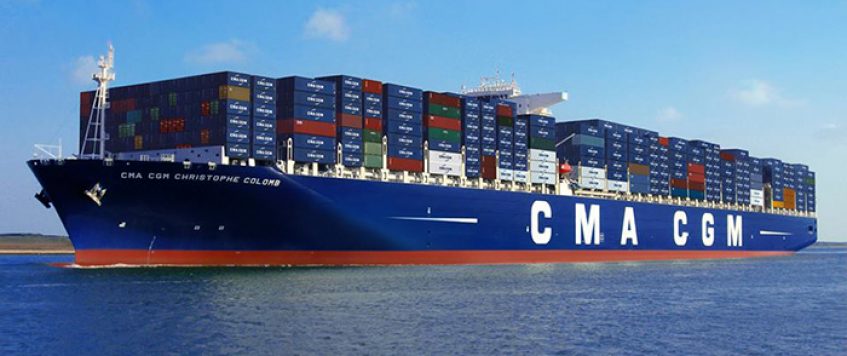-
02
Aug
Ocean Alliance plans to Deploy largest ship seen at US Port
Source: www.joc.com
The 18,000-TEU CMA CGM Benjamin Franklin, pictured in San Francisco Bay during a call to the Port of Oakland in February, could be one of the mega-ships the Ocean Alliance plans to deploy to the U.S. West Coast.
WASHINGTON — The Ocean Alliance in April plans to deploy ships with capacities up to 18,000 twenty-foot-equivalent units on the trans-Pacific trade, the largest ever seen by U.S ports, and isn’t ruling out bringing even larger ships.
The alliance said it initially plans deploy up to 175 container ships with capacities ranging from 4,200 TEUs to up to 18,000 TEUs on its trans-Pacific network with the strongest East and Gulf coast port focus seen in years. Ocean Alliance members CMA CGM, China Cosco Shipping, Orient Overseas Container Line and Evergreen Line said they could ultimately deploy up to 220 ships on the U.S. trades and introduce 21,000-TEU ships to the trade, according to a major vessel-sharing agreement filed with U.S. maritime regulators.
By pooling cargo on larger ships sailing to the U.S., the Ocean Alliance aims to mitigate overcapacity and gain the economies of scale needed to compete with the 2M Alliance of Maersk Line and Mediterranean Shipping Co., and possibly Hyundai Merchant Marine and THE Alliance. The latter includes MOL, NYK Line, “K” Line, Hanjin Shipping, Hapag-Lloyd and Yang Ming Line. Under such highly integrated VSAs, members still compete with each other and only cooperate on operations, not on marketing or sales. The 2M still needs regulatory approval to expand to include HMM.
CMA CGM was the first container line to deploy 18,000-TEU ships to the U.S. West Coast, doing so in late December. But the French carrier earlier this year postponed the launch of a weekly servicewith six 18,000-TEU ships to Long Beach and Oakland, raising speculation that CMA CGM miscalculated on the trans-Pacific trade. During an earnings call, CMA CGM said the decision was done to re-calibrate its network with its new alliance partners.
It’s been only in the last few weeks as peak season nears that trans-Pacific spot rates from Shanghai to the West Coast have strengthened, with rates up 21 percent year-over-year, at $1,421 per 40-foot-equivalent unit. Spot rates from Shanghai to the East Coast have also been strengthening in recent weeks, but rates are still down 29 percent from last year, at $1,871 per FEU, according to the latest reading of the Shanghai Containerized Freight Index, as displayed on the JOC.com Market Data Hub.
The U.S. Federal Maritime Commission has begun its 45-day review of the proposed five-year alliance with a five-year potential extension. If the FMC doesn’t stop the clock on the review to ask questions of the carriers or seek a federal injunction against the VSA, the alliance will take effect Aug. 29 — months before the network is actually deployed. If FMC commissioners pose questions to the carriers, the review clock will stop and the 45-day review will restart once the ocean carriers answer regulators’ questions.
FMC commissioners will review the proposed VSA through the lens of the Shipping Act of 1984 by determining if the alliance would likely cause an unreasonable decrease in service or unreasonable increase in cost. The FMC has yet to reject a VSA.
The outlook for the alliance getting approved by European and Chinese regulators also looks good. Only one major VAS has been rejected by regulators: when China nixed a tie-up of the top three global container lines by capacity known as the P3 Network, which the U.S. and European Union had approved.
Article via- http://www.joc.com
